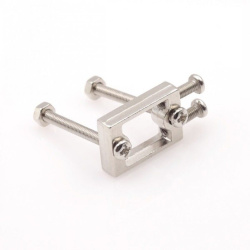Robotics
Robotics

I am sure you love the DC geared motor with wheel bundle, but mounting it to the robot base or platform will be a pain because there is no proper mounting bracket available. Now, we are happy to say that the pain is over, this is the bracket designed for that DC geared motor, and it is super strong and rigid as it is aluminum.
TT-02 DIY Car Model TT Motor w/ Wheel - Black Yellow (robot wheel and motor)
This affordable DC brush motor comes with gears and also a wheel, what else can you ask? The motor can be run from voltage 3V to 6VDC. This is perfect to build a small-sized mobile robot for student projects. The motor is also known as the TT motor.
TT DC Gear Motor Mounting Bracket (yellow motor bracket)
I am sure you love the DC geared motor with wheel bundle, but mounting it to the robot base or platform will be a pain because there is no proper mounting bracket available. Now, we are happy to say that the pain is over, this is the bracket designed for that DC geared motor, and it is super strong and rigid as it is aluminum.
L9110S H Bridge Stepper Motor Dual DC Driver Controller Module (L9110S small H Bridge)
This module can simultaneously drive two DC motors or a 4-wire 2-phase stepper motor


















